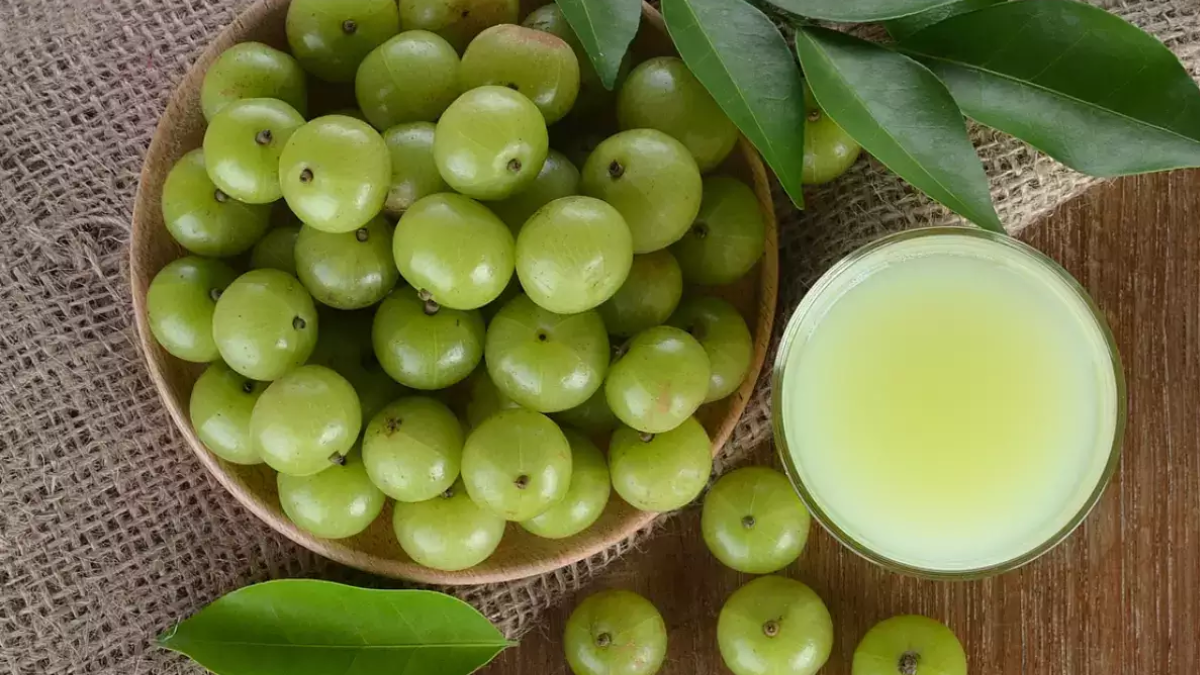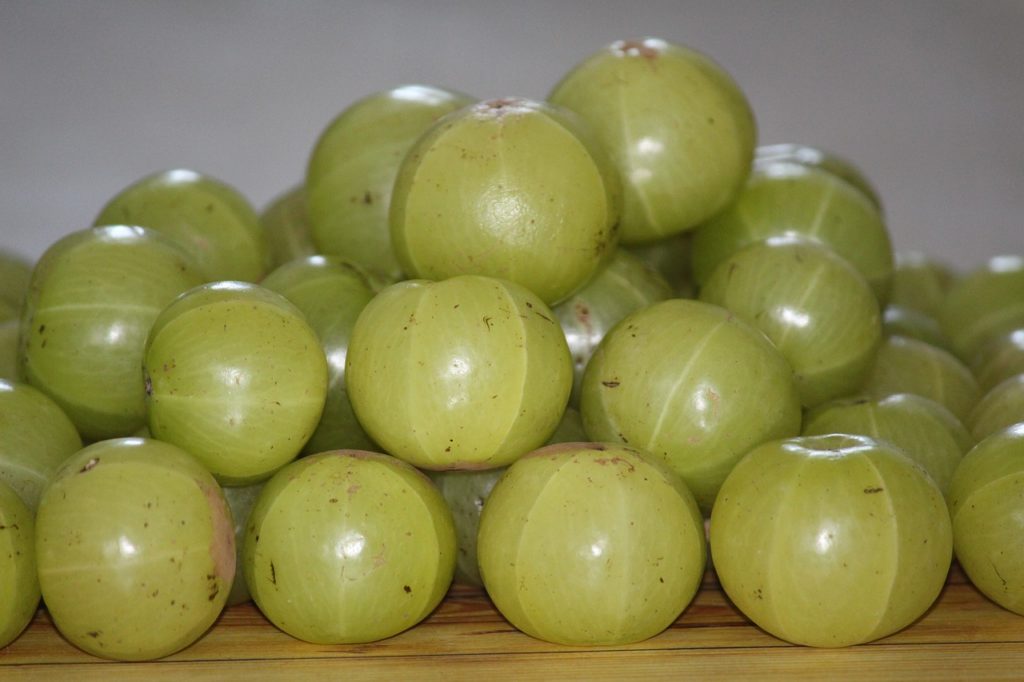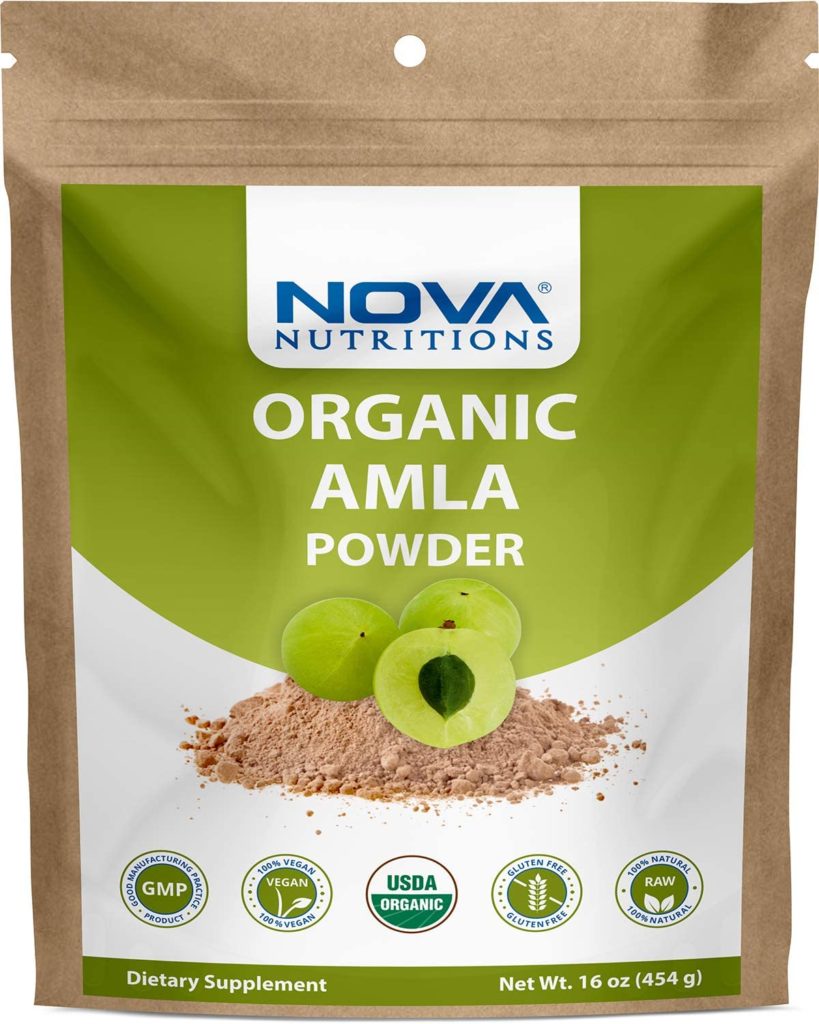Amla is a popular berry in India, has numerous health benefits, and is used in many religious rituals. Amla is a delicious fruit commonly eaten before meals and is said to ward off flu, respiratory infections, and Vata imbalances. It is a powerful antioxidant, and ancient Indian medicine promotes its use to prevent cancer cells from forming. You can eat amla raw or juice it, and it can also be consumed in the form of churna or pickles. It can also be taken as a supplement.
Amla Nutrition Facts
Amla
Amla is the round-shaped, vertically striped fibrous fruit of the deciduous tree “Euphorbiaceae,” native to India. It has a greenish-yellow color and a characteristic sour flavor to various culinary applications. Amla is used extensively in Indian medicine for several illnesses ranging from hair loss and indigestion to inflammation and dry cough due to its cooling and antioxidant effects.
Types Of Amla
Banarasi
This amla cultivar grows earlier than other types but has a shorter shelf life. It isn’t commonly used in the kitchen.
Chakaiya
It produces a large crop every other year and has fibrous, smaller fruits than other amla types. The little Chakaiya amla, on the other hand, has less fibrous variations that are commonly used in candies and preserves.
Francis
Certain types of Francis or Hathijhool amla produce fantastic yields regularly, making them a popular choice among amla-based product manufacturers.
Wild Himalayan Amla
This unique amla variety produces little fruits and is well suited to cold climates. Other continents, like North America, are occasionally seeded with it.
Promising Benefits Of Amla
Here are some promising benefits of amla:
It Helps Fight The Common Cold
Compared to store-bought supplements, the body’s vitamin C in amla is more easily absorbed. When you have a cold or a cough, mix two teaspoons of amla powder with two teaspoons of honey and take it three to four times a day for immediate relief or once a day for long-term prevention.
Amla Improves Eyesight
Amla’s carotene has been demonstrated to improve vision in studies. Amla has also been linked to an improvement in overall eye health since it can help with cataracts, intraocular tension (the pressure you feel in your eyes), as well as reddening, itching, and watering. Vitamin A found in the Indian Gooseberry helps to prevent age-related macular degeneration.
It Burns Fat
This is amla’s most underappreciated yet most intriguing benefit. Amla contains a protein that helps to prevent cravings. Amla is likewise very low in carbs and fat. Amla, according to nutritionists, improves metabolism and helps people lose weight faster. Amla has a lot of fiber and acids like tannic acid, which might help you get rid of constipation and look less bloated.
Amla Builds Immunity
The antibacterial and astringent qualities of amla help to strengthen the immune system. When body cells use oxygen, oxidative damage leaves behind toxic by-products called free radicals – which are responsible for many health disorders, including cancer. Because amla is a powerful antioxidant, it can prevent oxidation and protect the cell.
Amla Beautifies Hair
Amla, like curry leaves, is a well-known hair tonic. It contains many critical fatty acids, which go deep into the hair follicles and help prevent dandruff and strengthen them. This tart fruit is abundant in iron and carotene, promoting hair development. Amla also works as a natural conditioner, resulting in silky, lustrous tresses. You can use amla oil or combine amla powder with henna to make a hair pack.
Amla Improves Skin
Amla is the best fruit for anti-aging. Amla contains Vitamin C and antioxidants, which help to minimize fine lines and wrinkles and give skin a healthy glow. Drink amla juice with honey every morning to have blemish-free, healthy, and beautiful skin.
Amla Helps Manage Chronic Conditions
Amla is high in chromium, which helps lower bad cholesterol and boost insulin secretion, lowering blood glucose levels in people with diabetes. Drinking amla juice first thing in the morning or when one’s blood pressure is high can also assist in maintaining blood pressure under control.
It Relieves Pain
Amla’s anti-inflammatory qualities can help with everything from arthritis-related joint discomfort to unpleasant mouth ulcers. Amla is used to treat wounds as an analgesic, and studies show that its extracts can help with postoperative and neuropathic pain. Dilute amla juice in half a cup of water and gargle with it to treat ulcers.
Nova Nutritions Certified Organic Amla Powder
Features:
- Amla Berry Powder is 100% Certified Organic, Vegan, Natural, Gluten-Free, Kosher & Halal.
- It is also called gooseberry, which contains a concentration of vitamin C that supports healthy immune function.
- Free of artificial color, flavor, sulfates, phthalates, dioxides, state.
- Manufactured in GMP Facility
- 100% Satisfaction Guarantee
Does Amla Have Any Side Effects?
Before incorporating amla into your routine, consider a few things. If you already have a bleeding issue, it can raise your risk of getting one. It can also help you maintain a healthy blood sugar level. As a result, people with diabetes should eat this after checking with their physician. Amla helps you burn calories by speeding up your metabolism.
Drink a glass of amla juice first thing in the morning as a natural detoxifier. Amla’s antioxidants and high potassium content aid in blood pressure reduction, and it works wonders for blood pressure control when used with a teaspoon of raw honey.
Conclusion
In addition to being a good source of vitamin C, amla is also an excellent source of fiber. It helps you keep your digestive system healthy and can help you lose weight. It has also been shown to have anti-inflammatory properties. It has been used in India for centuries to treat menstrual discomfort. It is rich in calcium, iron, phosphorus, vitamin B, and fiber. It is a prevalent fruit in India.




